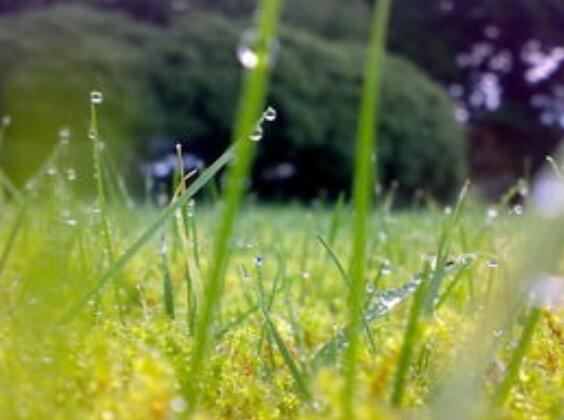
谁能帮我写一段介绍海南三亚七仙岭森林公园的英语介绍啊,急用
各位朋友,现在我们将要到达中国最南端的热带海滨城市三亚市,首先向大家介绍一下三亚的概况。
三亚别称“鹿城”,市花是三角梅,市树是酸豆树,酸豆树树体巨大、枝叶茂盛,树姿宏丽,是非常珍贵的草坪孤立风景树。
三亚不仅是我国天然大温室,是南繁育种和冬季瓜菜基地,更是避寒冬泳和开展潜水旅游的绝佳之处。
三亚古称崖州,由于交通闭塞,人烟罕至,被封建统治者当作流放贬官谪臣的蛮荒之地。
“一去一万里,千之千不还。
崖州在何处
生度鬼门关。
”唐代杨炎的这首诗,便反映了当时人们对三亚的感受。
三亚旅游资源得天独厚,汇集了阳光、海水、沙滩、环境、民族风情、名胜古迹和热带田园风光等众多旅游资源为一体,可以说三亚是海南热带自然景观最美,人文旅游资源最为丰富的地方。
三亚热带海滨的主要观光点和度假胜地有亚龙湾、大东海、鹿回头、天涯海角、南山文化旅游区、大小洞天、蜈支洲岛等。
它们不仅阳光明媚、沙滩细白、椰风摇翠、海韵迷人,而且都处在纯净无污染的生态环境中。
朋友们,三亚市已经到了,让我们放松身心,去融入古时被称为“极地异域”,如今正朝着国际海滨旅游城市方向前进的热土和海水吧。
([图片]2,三亚落日--lengjing)
海棠湾的导游词
海棠湾 位于海南省三亚市东北部海滨,距三亚市区28公里,南面与亚龙湾国家旅游度假区毗邻。
与亚龙湾、大东海湾、三亚湾、崖州湾并列三亚五大名湾。
海棠湾风光旖旎,沉寂异常。
与亚龙湾、大东海相比,这里还没有染上城市的喧嚣与繁闹。
海棠湾位于南中国海之滨,是三亚东疆门户。
东北与陵水县接壤,西北与保亭县毗邻,西南以仲田岭、回风岭、竹络岭、琼南岭群山为界,构成自然的海湾区域。
总面积384.2平方公里。
聚集着汉、黎、苗、侗、瑶、畲、土家族,以汉、黎为最。
总人口6.8万多人其中三亚市海棠湾镇人口43481人,南田农场人口24519人,苗、侗、瑶、畲、土家族均在农场。
(节选自《海棠湾志》)海棠湾风景迷人早在建省初期的三亚城市发展总体规划中,海棠湾即被列为一个独立的组团,规划用地面积100平方公里,当时的定位是以发展科研、国际交流、旅游度假及热带田园观光为主的生态城市组团。
由于被预留为城市远景发展备用地,海棠湾的资源环境因此得到了完好保护 。
旅游环境问题及建议
三亚呀诺达热带雨林景区距离三亚35公里,位于海南中线内充满原始热带雨林风光,被誉为“热带香巴啦”。
它是一个“神秘、神奇、神圣”的地方,以热带雨林为舞台,集山奇、林茂、水秀、谷深于一身,更是气候舒适,生态绝佳,环境幽雅,空气清新,各种植物散发出的植物杀菌素,不但杀菌,还刺激人们的植物神经,改善人体的健康状况。
“呀诺达”,是得天独厚巨大的“天然氧吧”和负氧离子发生器,是“森林浴”最理想、最优良的生态之地。
三亚呀诺达热带雨林是中国唯一地处北纬18度的热带雨林,是海南岛五大热带雨林精品的浓缩,堪称中国钻石级雨林景区。
“呀诺达”,是形声词,在海南本土方言中表示一、二、三。
景区赋予它新的内涵,“呀”表示创新,“诺”表示承诺,“达”表示践行,同时“呀诺达”又被意为欢迎、你好,表示友好和祝福。
呀诺达雨林文化旅游区整体规划面积45平方公里,周边是123平方公里的生态恢复保护区,计划投资39亿元人民币,建设期为六年,组织实施呀诺达雨林、药师峡谷、生肖广场、啪鲁迪野外拓训营、呀呀呀热带果乡、达达瑟黎苗博览以及酒店、度假村等项目。
目前对外开放的“呀诺达雨林”已投资2亿元人民币,建成雨林谷和梦幻谷两个景观区域,以美国电瓶车、生态栈道、飞瀑索道、高品质旅游巴士环绕成18公里长的园区通道。
热带雨林谷遮天蔽日,流泉叠瀑倾泻而下,年平均温度24度,踱步雨林中,你能感受阵阵清新凉意。
在这里,你能卸下最繁杂的纷扰,穿越雨林栈道,呼吸最清新的空气,畅享休闲的快乐时光。
在这里,百年古藤、千年古蕨、巨大的仙草灵芝、“冷血杀手”见血封喉以及热带雨林的六大奇观等,更是让你惊叹不已……“呀诺达雨林药膳”汇集中华药膳的精华,在传统工艺的基础上不断创新,运用独特的烹调技法,结合海南地方特色,将雨林中的山药、野菜、野生菌、土鸡、水库鲜鱼、特色蔬菜引入药膳,形成了独具特色的雨林药膳。
“呀诺达雨林药膳”是兼有养生功效和食品美味的特殊膳食,富含蛋白质、多种维生素和人体所需的多种氨基酸。
既可有效地补充人体能量和营养物质,又能调节机体内物质代谢,增强机体的自稳状态,提高抗病免疫力,改善心肺功能和造血系统的功能,促进血液循环等,达到滋补、强身,养颜、瘦身、防病、延寿等作用。
供你参考下
急求海南的英文介绍
Hainan (help·info) (Chinese: 海南; pinyin: Hǎinán) is the smallest province of the People's Republic of China, located off the southern coast of the country. It consists of several islands, the largest of which is also called Hainan Island (Hainan Dao). When speaking of Hainan in Chinese, it is usually the main Hainan Island that is referred to. The PRC government claims Hainan's territories to extend to the southern Spratly Islands, Paracel Islands and other disputed marine territory. Hainan is also known as the largest Special Economic Zone laid out by Chinese leader Deng Xiaoping in the late 1980s.[edit] HistoryHainan Island was called the Pearl Cliffs (珠崖 Zhūyá), Fine Jade Cliffs (琼崖 Qióngyá), and the Fine Jade Land (琼州 Qióngzhōu). The latter two gave rise to the province's abbreviation, Qióng (琼 in Simplified Chinese), referring to the greenery cover on the island.Hainan first enters written Chinese history in 110 BC, when the Han Dynasty established a military garrison there. Settlement by mainlanders was slow however and from early on the island was considered to be fit only for exiles. It was in this period that the Li people arrived from Guangxi Province and displaced the island's aboriginal Austronesian-speaking peoples.In Wu Kingdom of the Three Kingdoms Period, Hainan was the Zhuya Commandery (珠崖郡).Under the Song Dynasty, Hainan came under the control of Guangxi Province, and for the first time large numbers of Han Chinese arrived, settling mostly in the north. Under the Yuan Dynasty (AD 1206-1368) it became an independent province, but was placed under Guangdong Province during the Ming Dynasty in 1370. In the 16th and 17th centuries large numbers of Chinese from Fujian and Guangdong began migrating to Hainan, pushing the Li into the highlands in the southern half of the island. In the 18th century the Li rebelled against the government - who brought in mercenaries from the Miao people regions of Guizhou Province. Many of the Miao settled on the island and their descendants live in the western highlands to this day.Hainan was made an independent province again in 1912 under the name Ch'iung-yai Island, but by 1921 it was incorporated once more into Guangdong Province. During the 1920s and 30s Hainan was a hotbed of Communist activity, especially after a bloody crackdown in Shanghai, the Republic of China in 1927 drove many Communists into hiding. The Communists and the Li natives fought a vigorous guerrilla campaign against the Japanese occupation of 1939-45, but in retaliation over one third of the male population were killed by the Japanese. After the Japanese surrender in 1945 the Nationalist Party (KMT) re-established control. Hainan was one of the last areas of China controlled by the 's KMT. From March to May 1950, the Landing Operation on Hainan Island (Chinese: ; Pinyin: Hǎinándǎo Dēnglù Zhànyì) captured the island for the Chinese communists.The Communists resumed development of the island along the lines established by the Japanese, but the results were limited by the island's isolation, its humid and typhoon-prone climate, and its continuing reputation as a place of danger and exile by mainland Chinese. In 1988 the island was again made a separate province, and was designated a Special Economic Zone in an effort to increase investment.During the mid-1980s, when Hainan was still part of the Guangdong Province, a 14-month episode of marketing zeal by Hainan Special District Administrator Lei Yu* put Hainan's pursuit of provincial status under a cloud. It involved the duty-free imports from Hong Kong of 90,000 Japanese-made cars and trucks at a cost of C¥ 4,500,000,000 (US$ 1,500,000,000), and exporting them—with the help of local naval units—to the mainland, making 150 % profits. By comparison, only 10,000 vehicles were imported into Hainan since 1950. In addition, it involved further consignments of 2.9 million TV sets, 252,000 videocassette recorders & 122,000 motorcycles. The money was taken from the 1983 central gov't funds destined for the construction of the island's transportation infrastructure (roads, railways, airports, harbours) over the next 10 years.The central government funds were deemed insufficient by the Hainan authorities for the construction of the island's other infrastructures (water works, power stations, telecommunications, etc.) and had taken a very liberal interpretation of the economic and trade regulations for Hainan & 13 other coastal cities — the regulations did not mention on prohibiting the re-selling of second hand goods. Some of the proceeds, from unsold units, were later retrieved by the central gov't to re-finance the special district.[* Later, Vice Mayor of Shenzhen SEZ (05.1985—01.1988), Executive Vice Mayor of Guangzhou (01.1988—04.1992) & Vice Chairman of Guangxi AR (04.1992—01.1996).][edit] SubdivisionsHainan uses a slightly different administrative system from the other provinces of China. Most other provinces are divided entirely into prefecture-level divisions, each of which is then divided entirely into county-level divisions. County-level divisions generally do not come directly under the province. In Hainan, nearly all county-level divisions (the 4 districts excepted) come directly under the province. This method of division of due to Hainan's relatively sparse population.The political divisions of Hainan are:2 prefecture-level cities: Haikou City (海口市 Hǎikǒu Shì), subdivided into 4 county-level districts: Longhua District (龙华区 Lónghuá Qū) Xiuying District (秀英区 Xiùyīng Qū) Qiongshan District (琼山区 Qióngshān Qū) Meilan District (美兰区 Měilán Qū) Sanya City (三亚市 Sānyà Shì) 16 county-level divisions directly under the province, with no intermediate prefecture level: 6 county-level cities Wenchang City (文昌市 Wénchāng Shì) Qionghai City (琼海市 Qiónghǎi Shì) Wanning City (万宁市 Wànníng Shì) Wuzhishan City ( Wǔzhǐshān Shì) Dongfang City (东方市 Dōngfāng Shì) Danzhou City (儋州市 Dānzhōu Shì) 4 counties Lingao County (临高县 Língāo Xiàn) Chengmai County (澄迈县 Chéngmài Xiàn) Ding'an County (定安县 Dìng'ān Xiàn) Tunchang County (屯昌县 Túnchāng Xiàn) 6 autonomous counties Changjiang Li Autonomous County ( Chāngjiāng Lízú Zìzhìxiàn) Baisha Li Autonomous County ( Báishā Lízú Zìzhìxiàn) Qiongzhong Li and Miao Autonomous County ( Qióngzhōng Lízú Miáozú Zìzhìxiàn) Lingshui Li Autonomous County ( Língshuǐ Lízú Zìzhìxiàn) Baoting Li and Miao Autonomous County ( Bǎotíng Lízú Miáozú Zìzhìxiàn) Ledong Li Autonomous County ( Lèdōng Lízú Zìzhìxiàn) There is also the Office of West, South, and Central Sands Archipelagos, which oversees the South China Sea Islands: the Xisha (Paracel Islands), Zhongsha (Macclesfield Bank), and Nansha (Spratly Islands). The Spratlys are in reality disputed and divided among China and several neighbouring countries, while the Macclesfield Bank is claimed by the People's Republic of China, the Republic of China (Taiwan), and Vietnam, but administered by no one.The cities and counties of Hainan are divided into 218 township-level divisions, including 181 townships, 20 towns, and 17 subdistricts.Hainan was historically part of Guangdong Province and Guangxi Province, being as such, it was the Qiongya Circuit (琼崖道) in 1912 (the establishment of the Republic of China). In 1921, it was planned to become a Special Administrative Region (琼崖特别行政区); in 1944, it became Hainan Special Administrative Region with 16 counties containing the South China Sea Islands.On May 1, 1950 (under the PRC), the Special Administrative Region became an Administrative Region Office (海南行政区公署), a branch of the Guangdong provincial government. On October 1, 1984, it became the Hainan Administrative Region (海南行政区), with a People's Government, and finally as province separate from Guangdong four years later.[edit] GeographySatellite image of Hainan Topography (heights in metres)Hainan, separated by the Qiongzhou Strait (琼州海峡) from the Leizhou Peninsula (雷州半岛) of Guangdong, is the largest island administered by the People's Republic of China. However, the PRC claims it's the second largest island since Taiwan is considered the largest. To the West of Hainan is the Gulf of Tonkin. Wuzhi Mountain (1,876 m) is the highest mountain in the island.In the official PRC territorial claim, Hainan Province includes not just one island, but also some 200 South China Sea Islands. The containment of the South China Sea Islands makes Hainan Province have a very large water body, but disproportionally small land area. James Shoal (曾母暗沙 Zengmu Ansha), which is presently marked by the PRC, signifies the country's southernmost border. But the Malaysians also claim it is on their continental shelf.[edit] ClimateHainan has a tropical moist monsoonal climate. Its annual temperature change is less than 15 degrees Celsius. The coldest months are January and February when the temperatures drop to 16 to 21 degrees Celsius; the hottest months are July and August, and the temperatures are 25 to 29 degrees Celsius. Except for the mountainous regions in the central part of the island, the daily average temperature in Hainan is above 10 degrees Celsius, and the integrated temperature during the growing season of the crops reaches 8000 to 9000 degree Celsius-days. The summer in the north is swelteringly hot and, for more than 20 days in a year, the temperature can be higher than 35 degrees Celsius. The average annual precipitation is 1500 to 2000 mm, and may be as high as 2400 mm in central and eastern areas, and as low as 900 mm in the coastal areas of the southwest. The eastern part of Hainan lies in the path of typhoons, and 70% of the annual precipitation is derived from typhoons and the summer rainy season. Major flooding occurs due to the typhoons and they can cause many problem for the local residents.[edit] Rivers and lakesMost of the rivers in Hainan originate in the central area of the island and flow radially in different directions. The Nandu River in the northern part of the island is 314 km long, and its tributary, the Xinwu River, is 109 km long; the Changhua River in the west is 230 km long; and the Wanquan River in the east is 162 km long. Evaporation during the dry season around the coastal areas greatly reduces the flow of the rivers.There are very few natural lakes in Hainan. There is a well-known artificial reservoir, the Songtao Reservoir, in the central-north area.[edit] EconomySince the 1980s, Hainan province has been a Special Economic Zone of China. The province has a reputation for being a Wild West area. Hainan Island is largely untouched by industrialisation and there are few factories.The economy is not subject to the policies of the mainland.Its nominal GDP for 2004 was 76.94 billion yuan (US$9.55 billion), making it the 4th smallest in all of the PRC and contributes just 0.5% to the entire country's economy. Its GDP per capita was 8,270 yuan (US$998).[edit] DemographicsEthnolinguistic Groups of Hainan, 1967 (See entire map, which includes a key)In 2000, the ethnic groups of Hainan included the Han Chinese, known as the Hainanese, who currently make a majority (83% of the population); the Li people (16% of the population); the Miao (Hmong) (0.8%) and the Zhuang (0.7%). The Li are the largest indigenous group on the island in terms of population. Also found on the island are the Utsuls, descendants of Cham refugees, who are classified as Hui by the Chinese government.There are 90,000 Buddhist Hainanese, and 6,500 Muslims. Because Hainan was a point in the travel route of missionaries, there are many Christians: 35,000 Protestants and 4,100 Catholics. Most, if not all, of the 6,500 Muslim Hainanese mentioned above are Hui Chinese living near Sanya.The Han Chinese of Hainan speak a variant of the Min Nan Chinese language, known as Hainanese. Standard Cantonese is understood by many local Hainanese. English is understood by some of the younger generation, but Hainan still largely remains a non-English speaking environment. The Li people have their own language, as do the Miao and Zhuang. The latter three groups would usually speak Standard Mandarin as a second language.[edit] Famous peopleThe poet Su Dongpo (1036-1101) popularized Hainan's isolation and exoticness when he was exiled there under the Song dynasty. The Dongpo Academy was built on the site of the residence where he lived in exile.Hai Rui (1514-1587) was a famous Chinese official of the Ming dynasty. His name has come down in history as a model of honesty and integrity in office.The most famous natives of Hainan are the sisters Song Qingling (Soong Ch'ing-ling), wife of Sun Yatsen, and Song Meiling (Soong Mei-ling), wife of Chiang Kai-shek and a vigorous lobbyist on behalf of the Chinese Nationalist Party (KMT) in the United States.[edit] FoodHainan cuisine is said to be lighter, with mild seasonings. A lot of local taste is mixed with the Han Chinese taste. The most famous dish is Hainanese chicken rice.[edit] TourismAs Hainan Island is not heavily industrialised, its greenery, together with its beautiful beaches and clean air, make it a popular tourist attraction. The island is accessible through ferry links with Guangdong province, as well as air links. There are two airports, Meilan Airport in Haikou, and Phoenix Airport in Sanya.In December 2004, the Guangdong-Hainan passenger railway link opened, connecting Guangzhou in Guangdong province on the mainland to Hainan Island. The complete trip, which includes crossing the Qiongzhou Strait by ferry, takes a total of 12 hours. The project cost $583 million US and is expected to greatly enhance Hainan's tourism and economic development. This is important because Hainan currently lags well behind Shenzhen and Zhuhai special economic zones, which border Hong Kong and Macao, respetively.Hainan Island is often divided into eight regions for tourism purposes Hainan Island: Haikou and area (Haikou, Qiongshan, Ding'an); the Northeast (Wenchang); the Central East Coast (Qionghai, Ding'an); the South East Coast; the South (Sanya); the West Coast (Ledong, Dongfang, Changilang); the North West (Danzhou, Lingao, Chengmai); and the Central Highlands (Baisha, Qiongzhong, and Wuzhishan\\\/Tongzha).Haikou is the province's capital and contains interesting historic sites. Also known as Coconut City, Haikou is a major port. The Five Official's Temple consists of five traditional temples and halls that were built in honour of five officials of the Tang (618-907) and Song (960-1279) dynasties. These officials were banished to Hainan for periods ranging from 11 days to 11 years for speaking out against what they felt were wrong practices by the Emperors. (It is perhaps significant that the establishment of the Five Officials Temple in the late 19th century coincides with a time when China's territorial integrity was under threat, and that several of the officials honoured here were exiled for espousing aggressive policies on the recapture of the north of China from the Jurchens during the Southern Song dynasty.)Luhuitou Peninsula. The word luhuitou means Deer Looking Back in Chinese.Xiuying Fort Barbette was built in 1891 to defend the southeastern corner of China during the Sino-French War. The Xiuying Fort Barbette covers about a third of an acre. Its five large cannons are still intact and viewable at the site.Hairui Tomb is a key national cultural protection site. Hai Rui was a compassionate and popular official of Hainanese origins who lived during the Ming Dynasty. He was famous for his lifelong honesty and his willingness to speak out on behalf of local people. In later life, Hai Rui was persecuted and fell out of favour with the emperor. His admirers built the Hai Rui Tomb after his death to commemorate his great works. Construction of the tomb began in 1589.Perhaps the best known tourist attractions of Hainan Island are its world class beaches, luxurious hot springs, and beautiful scenery. With white sand beaches, tranquil green waters and areas of lush vegetation, Hainan has much to offer. Some top scenic sites are Yalong bay National Resort; Dadonghai Tourist Resort; Qizhi Shan (Seven Finger Mountain), Guantang Hot Spring Resort, Shishan Volcanic Garden; Wanquan River, Baishi Ridge Scenic Zone and Baihua Ridge. Visitors should be aware that once they get to Hainan, there is a dearth of tourist information in English (or Mandarin), so finding how to get to the top tourist sites is not always easy. Compounding this is the abundance of inferior tourist attractions that are rapidly springing up to take advantage of the new tourism economy.Some attractions in Hainan include:Qiong Opera (??) Yalong Wan (??? Crescent Dragon Bay), Sanya City, southern Hainan: 7-km beach. The province has initiated a visa-upon-arrival policy for foreign tourist groups from 21 countries in 2000, in order to attract visitors. It received 380,000 overseas tourists in 2002.[edit] Miscellaneous topicsHainan is a sister province of Jeju island-province of South Korea and of the Canadian island-province of Prince Edward Island. The novel, Red Detachment of Women, by Liang Xin, was set in Hainan. The novel was first adapted to a feature film in the 1950s, and then a ballet in the 1960s as one of the Eight model plays. Most of the people of that time derived their romanticized image of Hainan Island from the scenes in the ballet, particularly that of the vivid forests of coconut trees, the Five-Finger Mountain (Wuzhi Shan), and the Wanquan River. [edit] Further readingD'Arcy Brown, Liam (2003). Green Dragon, Sombre Warrior: travels to China's extremes. London: John Murray
写保亭七仙岭的美景作文
南岛的早晨似乎特别早,太阳也特别热情。
一,天空碧蓝一片,金灿灿的阳光刺得眼睁不开。
浓密的枝叶间,早起的鸟儿也此起彼落地拉起了歌。
在这个令人陶醉的早晨,我们一家人兴高采烈地去七仙岭游玩。
远看七仙岭,就像七位仙女守护着自己的家园。
进山公路两旁的槟榔树,每一棵都是那么笔挺、壮实,就像一位位高大魁梧的士兵。
路旁的野花千姿百态:有的左右摇摆,像在跟我们问好,有的张开全部花瓣,像在展示着自己的颜容;还有的半开半闭,就像在对着蓝天羞涩的微笑……真是五彩缤纷
七仙岭的景色真秀丽,一座座高大的山峰穿过云间,一眼望去,好像没有顶端。
山的姿态各异,有的像老态龙钟的老爷爷;有的像年轻力壮的小伙子;还有的像亭亭玉立的少女。
高耸的山石间,不时飞出一只只、一对对、漂亮的、叫声好听的小鸟,又给七仙岭增添了几分韵致。
山上大多数是苍劲的椰树,从远处看,一棵挨着一棵,中间没有多大空隙,使得山林就像一大绿绒毡,美不胜收啊
海南槟榔谷导游
呀诺达雨林文化旅游区位于三亚市北偏东方向的保亭黎族自治县三道农场,距离三亚市中心35公里。
是中国唯一地处北纬18度的热带雨林,是海南岛五大热带雨林精品的浓缩,是最具观赏价值的热带雨林资源博览馆,堪称中国钻石级雨林景区。
北连五指山、七仙岭和中部绿色腹地,在景区的观景台可眺望远景,海棠湾岸线、蜈支洲岛、猴岛尽收眼底的景观冲击,形成了与众不同的区位优势。



